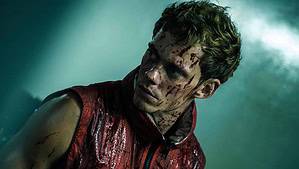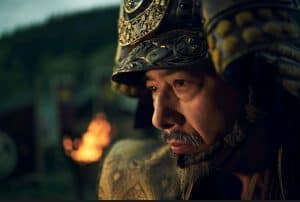The movie critique portion of this review was written by my colleague Martin Sexton.
Star Trek ran for only three seasons. But from 1966-1969, it developed a large fan following. However, it was when it went to syndication that it really blew up. In fact, most of today’s fans were only introduced to it from their local television stations running it every weekday. Ever since it ended, fans were hoping for a renewal. At one point there were even plans for a new Star Trek series. Those plans never came to fruition but instead evolved into a feature film: Star Trek: The Motion Picture.

Star Trek: The Motion Picture (1979)
The U.S.S. Enterprise boldly debuted on the big screen with the cast of the original Star Trek series, including William Shatner, Leonard Nimoy, DeForest Kelley, George Takei, Nichelle Nichols, Walter Koenig, and James Doohan. When an unidentified alien intruder destroys three powerful Klingon cruisers, Captain James T. Kirk returns to the helm of a newly transformed U.S.S. Enterprise to take command. This is the original theatrical cut of the acclaimed adventure and features Jerry Goldsmith’s rousing iconic overture.
Directed by famed filmmaker Robert Wise, Star Trek: The Motion Picture reunited all the original Star Trek cast, which was more than enough to generate excitement. It was an ambitious film full of impressive visual effects and with a story that pulled a bit from Star Trek lore. The problem was that the film leaned so much on the visuals that the storyline got trampled under their weight. Large sections of the film’s time were taken showing their FX handiwork without advancing the plot. This made for a lengthy, slow film that while serving to embrace the nostalgia of the past, failed to capture the magic of the source material.
In my opinion, this was more a failing of the powers that be than Wise, who didn’t suddenly forget how to direct a film. It fell victim to the want to impress audiences with great visuals – especially since Star Wars had released two years earlier. Regardless, the film did well enough at the box office to inspire a second film, Star Trek II: The Wrath of Khan.
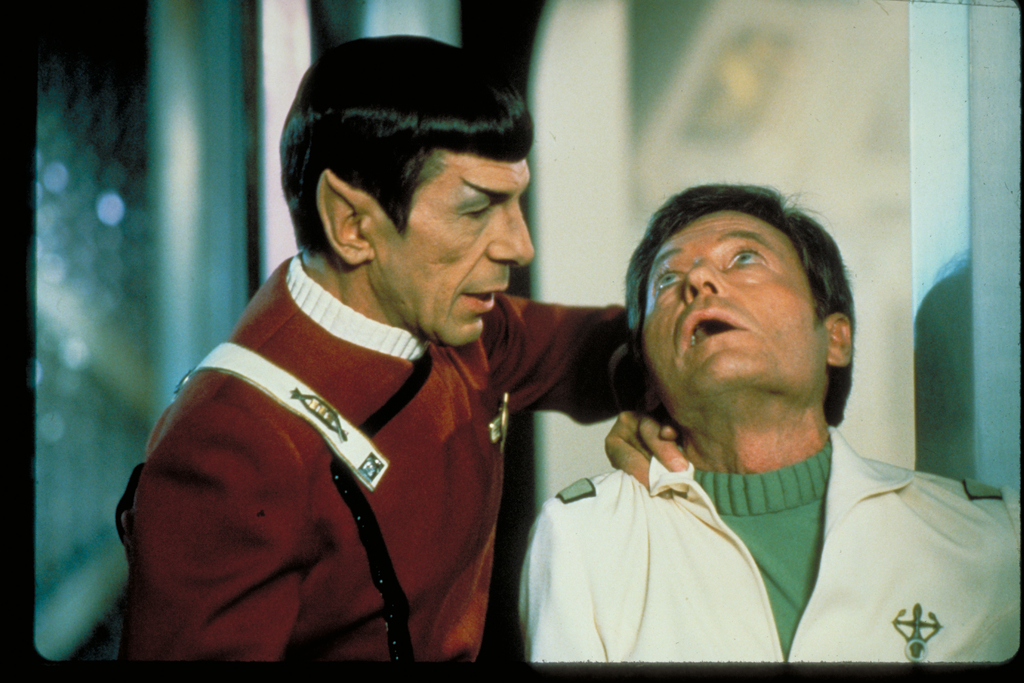
Star Trek II: The Wrath of Khan (1982)
Including both the original theatrical and director’s cuts, Star Trek II: The Wrath of Khan is one of the most celebrated and essential chapters in Star Trek lore. On routine training maneuvers, Admiral James T. Kirk seems resigned that this may be the last space mission of his career. But an adversary from the past has returned with a vengeance. Aided by his exiled band of genetic supermen, Khan (Ricardo Montalbán)—brilliant renegade of 20th century Earth—has raided Space Station Regula One, stolen the top-secret device called Project Genesis, wrested control of another Federation starship, and now schemes to set a most deadly trap for his old enemy Kirk… with the threat of a universal Armageddon.
This was classic Star Trek and chose to embrace the action that pushed the Original Series. Directed by Nicholas Meyer, it improved on Star Trek: The Motion Picture in every way. Of course, they were also smart enough to feature Ricardo Montalban returning as Khan Noonien Singh from the original episode Space Seed. It was an old-fashioned Star Trek adventure with a bit of Naval Submarine action intermixed. Khan introduced Kirstie Alley as Lt. Saavik, Bebe Besch as Carol Marcus and Merrit Butrick as David Marcus, Kirk’s Son. Not to mention an ending that brought even the most hardened person to tears.
This was supposed to be actor Leonard Nimoy’s last appearance as Mr. Spock. After the production, when Nimoy professed how much fun he had, it was revealed that a door was left open. He might return as Spock, but he wanted to direct. Paramount conceded to his request (demand) for the film which became Star Trek III: The Search for Spock.

Star Trek III: The Search for Spock (1984)
Admiral Kirk’s defeat of Khan and the creation of the Genesis planet are empty victories. Spock is dead and McCoy is inexplicably being driven insane. Then a surprise visit by Spock’s father provides a startling revelation: McCoy is harboring Spock’s living essence. Kirk attempts to steal the U.S.S. Enterprise and defy Starfleet’s Genesis planet quarantine to search for his friend, but the Klingons are planning a deadly rendezvous.
Taking place right after the end of the Wrath of Khan, The Search for Spock introduced veteran character actor Christopher Lloyd as the Klingon Captain Kruge. He had heard about the Genesis device that was used in the previous film and wanted its secrets. Of course, it was the Genesis Device that proved to be the plot device that allowed for Spock’s return – in science fiction, it doesn’t take much. Like Wrath of Khan, The Search for Spock also embraced action, allowing for a knockdown, drag out fight between Kirk and Kruge. It also included not one but two deaths of consequence. The second one being the Enterprise itself. (Don’t worry, kids. There will ALWAYS be an Enterprise). This film, while not quite capturing the magic that Wrath of Khan bottled, did well enough to make a fourth film a possibility while also allowing Nimoy another bite at the apple. This led to Star Trek IV: The Voyage Home.
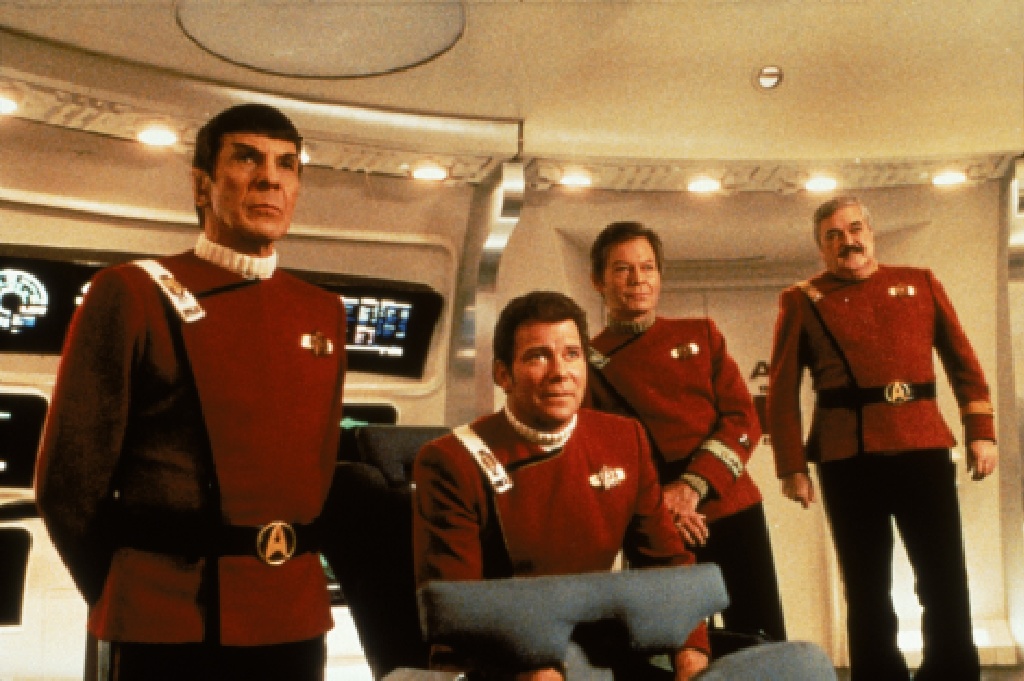
Star Trek IV: The Voyage Home (1986)
When a mysterious alien power threatens the atmosphere of Earth in the 23rd century, Kirk and his crew must time travel back to 1986 San Francisco to save mankind. Exploring this strange new world, they encounter punk rock, pizza and exact-change buses that are as alien as anything in the far reaches of the galaxy.
Based on a story by Nimoy and Producer Harve Bennett, this film took a different path as it embraced comic moments as well as science fiction elements. It explores what might happen if an alien probe contacted an ocean-based life-form on Earth in the past and returns to decipher why they lost contact. Upon their return, their scans have a catastrophic effect on the Earth’s atmosphere.
Fortunately, the newly regenerated Spock deciphers the probe’s signal. He theorizes that the crew will need to make a trip back in time to retrieve the source of the signal the probe is searching for: the songs of humpback whales. Sounds simple enough. The Voyage Home introduced Catherine Hicks as Dr. Gillian who is the expert on Humpback Whales and just so happens to have two in captivity. How fortuitous.
So, Kirk and crew make a trip back to present time to somehow pick up a couple of humpback whales, bring them back to their time so they can answer the probe. As incredulous as this sounds, it makes for some comedic fish out of water moments while still embracing some classic Star Trek tenants. Naturally, the crew finds a way to save the day just in the nick of time (so to speak). The infusion of humor and classic Star Trek action made for a change of pace from the more serious previous films. The Voyage Home was a well-received film that captured both Star Trek and non-Star Trek fans. It also opened the door for Star Trek V and the directorial debut of William Shatner. But that’s another story.
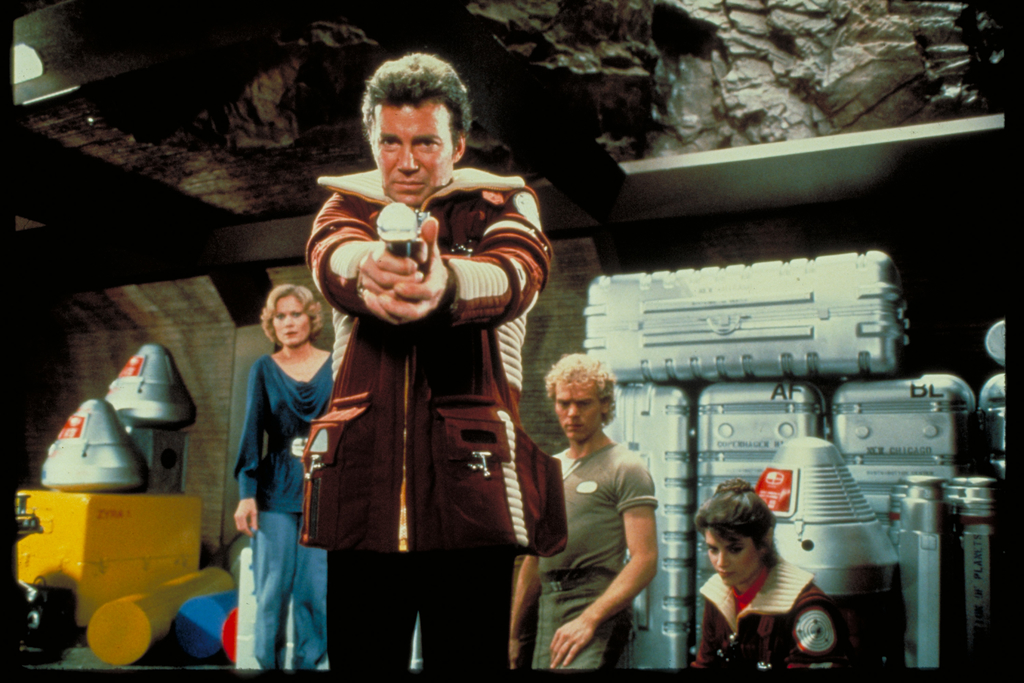
Video Quality
First things first, all four films in the Star Trek: The Original 4-Movies Collection have been newly remastered from the original elements and serve as a significant step up from their previous Blu-Ray releases. The previous releases were pleasing in their day to various degrees, but Paramount completely knocks the video portion of the set out of the park this time around with these new 4K UHD Blu-Rays. These new releases arrive with a magnificent 2160p/Dolby Vision transfer that injects new life into these films. In an effort to not duplicate descriptions, I will largely attempt to group the films together while pointing out noticeable differences.
As the series progresses, the video quality mostly seems to get even stronger, but the fourth installment offers the slightest downtick in quality in some shots likely due to the cameras used to shoot on location. The DNR present on previous discs have been eliminated with the filmic quality preserved for all the movies in the set with natural grain that yields an eye-popping amount of detail. There does not appear to be even a hint of artificial sharpening with detailed textures coming through in all of the expected places such as costumes and the various settings with new details visible for the first time. If you ever go back to the old Blu-rays, the films will look lifeless in comparison to the almost three dimensional production design on display. Skin tones also look nice and natural throughout with an impressive amount of detail on display on the performers faces. The only persistent aspect that does not look wonderful are some of the special effects shots and optical dissolves, but this has more to do with how the shots were filmed and assembled within the film rather than an issue with the transfer. Instances of softer shots are typically short-lived, and blurring in some of the grain only pops up in a handful of shots each film.
The Dolby Vision provides colors that pop off the screen with a wondrous vibrancy that make this set a real visual treat. This set brings a tear to your eyes from the moment you set eyes upon the energy clouds surrounding V’Ger. Every film in this set has a chance to shine with nuanced interiors and vivid colors when it comes to the costumes and production design. The density that some of these colors exude is unbelievable, even in some of the more subdued early films. Black levels are incredibly deep without giving way to any unwanted crush. With as many low-light situations as this series features, this is critically important. Likewise, the white levels hold together beautifully with not even an ounce of blooming at any point. Compression artifacts, banding or other digital anomalies do not serve as a significant issue. This transfer allows a lot of texture and depth to shine through in the production design. These new 4K UHD Blu-Rays are truly a thing of beauty.
Audio Quality
The 4K UHD Blu-Ray set offers the same Dolby TrueHD 7.1 presentation found on the Blu-Rays that handles the action incredibly well. While a new Dolby Atmos presentation would have been amazing, these tracks are no slouch. The tracks are not just impressive because they are loud or busy, what truly impresses is the nuance that is employed in the sound design. Directionality of sound is never an issue with this film series, and dialogue is reproduced with supreme clarity. The iconic soaring score from Jerry Goldsmith to James Horner and Leonard Rosenman fills the room in a way that never fails to stir something deep inside of you. The track offers deep immersion into the various environments so that even the subtlest elements are represented. All of the sounds are balanced well during the more active sequences so each element is distinct instead of a jumbled mess. The key set pieces and other smaller kinetic moments provide a pleasing amount of activity in the low end. The audio presentation is a wonderful experience from start to finish even without the full Atmos experience.
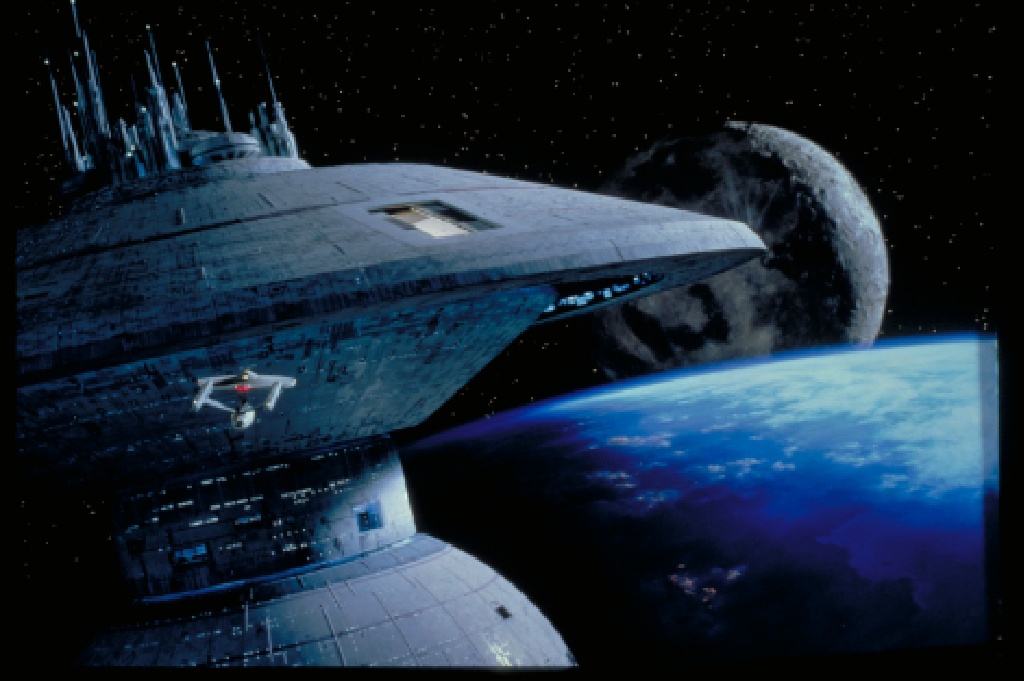
Special Features
Star Trek: The Motion Picture
- Audio Commentary: Michael & Denise Okuda, Judith & Garfield Reeves-Stevens and Daren Dochterman provide an entertaining and informative commentary track in which the group discusses the origins of this film, the special effects, the shooting locations, the production design, the performances both large and small and more. There are large swaths of silence throughout but overall this provides a nice time.
- Isolated Score Track: An option to watch the film with only the score audible in Dolby Digital 2.0.
- Library Computer: An interactive experience that allows you to access more information about people, technology, locations and more within the film.
- Production: An eleven-minute featurette which further explores the origins of this film and the process of developing the script.
- The Star Trek Universe
-
- Special Star Trek Reunion: A ten-minute piece in which a group of superfans/extras discuss reminisce about the opportunity to appear in the film.
-
- Starfleet Academy Scisec Brief 001 – Mystery Behind V’Ger: A four-minute piece in which a Next Generation officer recounts the events of the film.
- Deleted Scenes: Eleven unused scenes totaling eight minutes are provided here which features a few interesting moments fans will want to check out.
- Storyboards: A collection of early visualizations are included here.
- TV Spots: Seven TV Spots totaling nearly four minutes are provided here.
- Trailers: This disc provides the Teaser Trailer (2:18) and the Theatrical Trailer (2:29).
Star Trek II: The Wrath of Khan
- Director’s Cut (1:56:31) and Theatrical Version (1:53:03)
- Audio Commentary (Director’s Cut & Theatrical Version): Director Nicholas Meyer delivers a nifty commentary track in which he discusses his background, the process of writing The Wrath of Khan, how the cast initially reacted to the script, the budget constraints, the nuances he injected into the film, the performances and more.
- Audio Commentary (Theatrical Version): Director Nicholas Meyer and Producer Manny Coto provide another lively commentary track in which they provide tons of background information on the project, discuss directorial choices, bringing reality to the picture when possible, share stories about the performers and more. Coto is all a huge fan of the series as a whole, and it is helpful to have him along to ask questions fans would want to know.
- Text Commentary By Michael and Denise Okuda (Director’s Cut – Blu-Ray): An option to view the film with boxes of information text containing tidbits of information is provided here.
- Library Computer: An interactive experience that allows you to access more information about people, technology, locations and more within the film.
- The Genesis Effect – Engineering The Wrath of Khan: A 28-minute retrospective piece in which cast, crew and fans of the series reflect back on how this film almost did not exist, the shaping of the script, the legacy of the film, the iconic performances, the emotional impact of the story and more.
- Production
-
- Captain’s Log: A 27-minute archival piece in which the cast and crew once again reflect back upon how this film came to be with more input from the primary actors this time around.
-
- Designing Khan: A 24-minute featurette which explores the look of the ships, the uniforms, the Genesis torpedo and more.
-
- Original Interviews: An eleven-minute collection of interviews with William Shatner, Leonard Nimoy, DeForest Kelley and Ricardo Montalban from the original promotional tour.
-
- Where No Man Has Gone Before – The Visual Effects Of Star Trek II: An 18-minute exploration of the creation of the film’s various special effects.
-
- James Horner – Composing Genesis: A ten-minute piece in which the acclaimed composer discusses his work on the film.
- The Star Trek Universe
-
- Collecting Star Trek’s Movie Relics: An eleven-minute featurette which takes a look at some of the famous movie props used throughout the franchise.
-
- A Novel Approach: A 29-minute featurette which takes a look at the process of trying to bring the Star Trek universe to the printed page.
-
- Starfleet Academy Scisec Brief 002 – Mystery Behind Ceti Alpha VI: A three-minute piece in which a Next Generation officer recounts the events of the film.
- Farewell: A five-minute tribute to Ricardo Montalban is provided here.
- Storyboards: A collection of early visualizations are included here.
- Theatrical Trailer: This disc provides the two-and-a-half minute theatrical trailer.

Star Trek III: The Search for Spock
- Audio Commentary #1: Director Leonard Nimoy, writer/producer Harve Bennett, director of photography Charles Correll and actress Robin Curtis provide a commentary track that has been recorded separately and stitched together rather well. In this track there is discussion about laying the seeds for future encounters with Spock in Wrath of Khan, the themes of the story, the cast interactions and more. Nimoy shows a real passion for the material as he leads the discussion.
- Audio Commentary #2: Ronald D. Moore and Michael Taylor offer an intriguing perspective on this film as writers of some of the subsequent series. There is much discussion of how material from these original films were used when sculpting what would come later, their thoughts as fans and much more that gives this an overall joyful tone.
- Library Computer: An interactive experience that allows you to access more information about people, technology, locations and more within the film.
- Production
-
- Captain’s Log: A 26-minute archival piece in which the cast and crew reflect back upon how this film came to be, Nimoy’s increased role behind the scenes, the challenges of the shoot, where the characters are at this point in the story and more.
-
- Terraforming and the Prime Directive: A 26-minute featurette which explores mankind’s potential ability to terraform Mars.
-
- Industrial Light & Magic – The Visual Effects of Star Trek: A fourteen-minute look at the great techniques used to bring the Star Trek franchise to life.
-
- Spock – The Early Years: A six-minute look at the young actors who portrayed Spock with insights from some of the key participants.
- The Star Trek Universe
-
- Space Docks and Birds of Prey: A 28-minute featurette which explores the new models and effects used in the film and how they pulled off portraying them on screen.
-
- Speaking Klingon: A 21-minute featurette which examines the development of the Klingon language throughout the franchise.
-
- Klingon and Vulcan Costumes: A 12-minute look at some of the costumes and accessories featured in the Star Trek films.
-
- Star Trek and the Science Fiction Museum and Hall of Fame: A 17-minute exploration of the Star Trek exhibit located at the museum in Seattle, Washington.
-
- Starfleet Academy Scisec Brief 003 – Mystery Behind The Vulcan Katra Transfer: A three-minute piece in which a Next Generation officer recounts the events of the film.
- Photo Gallery: A look at behind-the-scenes moments and still from the film.
- Storyboards: A collection of early visualizations are included here.
- Theatrical Trailer: This disc provides the minute-long theatrical trailer.
Star Trek IV: The Voyage Home
- Audio Commentary #1: William Shatner and Leonard Nimoy offer the best commentary track of the set with many amusing exchanges between the two performers and friends. They discuss the switch to a more lighthearted tone for this entry, the time travel aspect, cast camaraderie and more.
- Audio Commentary #2: Roberto Orci and Alex Kurtzman provide a fun commentary track from a fan perspective in which they relay their personal connections to the franchise, the legacy of the film, the humor in the film, the special effects and much more.
- Library Computer: An interactive experience that allows you to access more information about people, technology, locations and more within the film.
- Production
-
- Future’s Past – A Look Back: A nearly 28-minute retrospective piece in which the cast and crew discuss developing the story, thoughts on time travel, the added humor in the film, the legacy of the franchise, a dissection of some of the more famous scenes and more.
-
- On Location: A nearly eight-minute piece in which the cast and crew discuss shooting in San Francisco.
-
- Dailies Deconstruction: A four-minute look at some of the raw footage and alternate angles of specific scenes.
-
- Below-The-Line – Sound Design: A twelve-minute look at the creation of sounds within the film to fit this world.
-
- Pavel Chekov’s Screen Moments: A six-minute featurette in which actor Walter Koenig discusses his increased presence in the film.
- The Star Trek Universe
-
- Time Travel – The Art Of The Possible: An eleven-minute featurette in which prominent physicists discuss the theories of time travel.
-
- The Languages Of Whales: A six-minute piece that takes an in-depth look at the communication of whales.
-
- A Vulcan Primer: An eight-minute exploration of the logical and emotionally-controlled species and Spock in particular.
-
- Kirk’s Women: An eight-minute piece featuring a series of interviews with several of the women that Kirk has romanced over the years. There is some good insight into both Kirk and Shatner.
-
- Star Trek – Three Picture Saga: A ten-minute look at the “trilogy” that runs from Wrath of Khan to The Voyage Home and how the story evolved and expanded.
-
- Star Trek For A Cause: A six-minute featurette that takes a look at the message of environmentalism in the film and how it helped spread the message to a wider audience.
-
- Starfleet Academy Scisec Brief 004 – The Whale Probe: A four-minute piece in which a Next Generation officer recounts the events of the film.
- Visual Effects: A nearly 18-minute examination of two special effects sequences in the film and how they were brought to life.
- Original Interviews: Archival interviews are provided with William Shatner (14:33), Leonard Nimoy (15:40), and DeForest Kelley (13:02).
- Tributes
-
- Roddenberry Scrapbook: An eight-minute reflection on series creator Gene Roddenberry courtesy of his son.
-
- Featured Artist – Mark Lenard: A 13-minute reflection on actor Mark Lenard courtesy of his family.
- Production Gallery: A four-minute look at behind-the-scenes moments from the film.
- Storyboards: A collection of early visualizations are included here.
- Theatrical Trailer: This disc provides the two-and-a-half minute theatrical trailer.
Final Thoughts
Star Trek: The Original 4-Movies Collection brings together the first four adventures of our favorite space crew for the first time in 4K UHD. Not every outing hits it out of the park, but each one at least has certain elements that are commendable. Even when they are flawed, most of these films remain a lot of fun to return to again and again. The new 4K UHD Blu-Ray set from Paramount Home Entertainment offers a spectacular A/V presentation and an impressive array of legacy special features. Fans will be happy to own these classic films on the best format possible, and as an added bonus by supporting this release you will ensure that the remainder of the series gets the same treatment. Highly Recommended
Star Trek: The Original 4-Movies Collection will be available to purchase on 4K UHD Blu-Ray on September 7, 2021.
Note: Images presented in this review are not reflective of the image quality of the 4K UHD Blu-Ray.
Disclaimer: Paramount Home Entertainment has supplied a copy of this set free of charge for review purposes. All opinions in this review are the honest reactions of the author.

Dillon is most comfortable sitting around in a theatre all day watching both big budget and independent movies.




